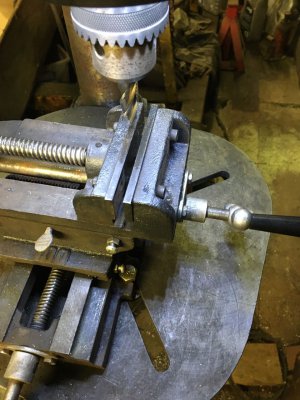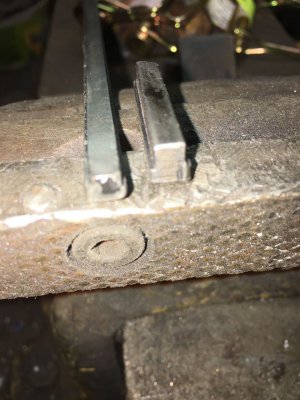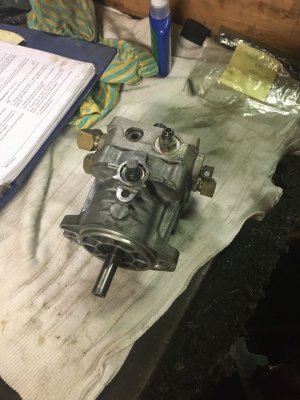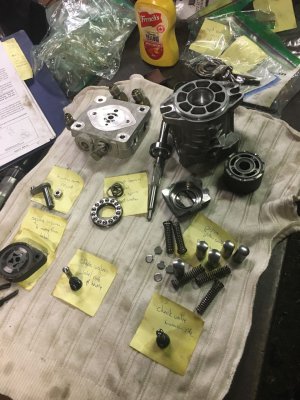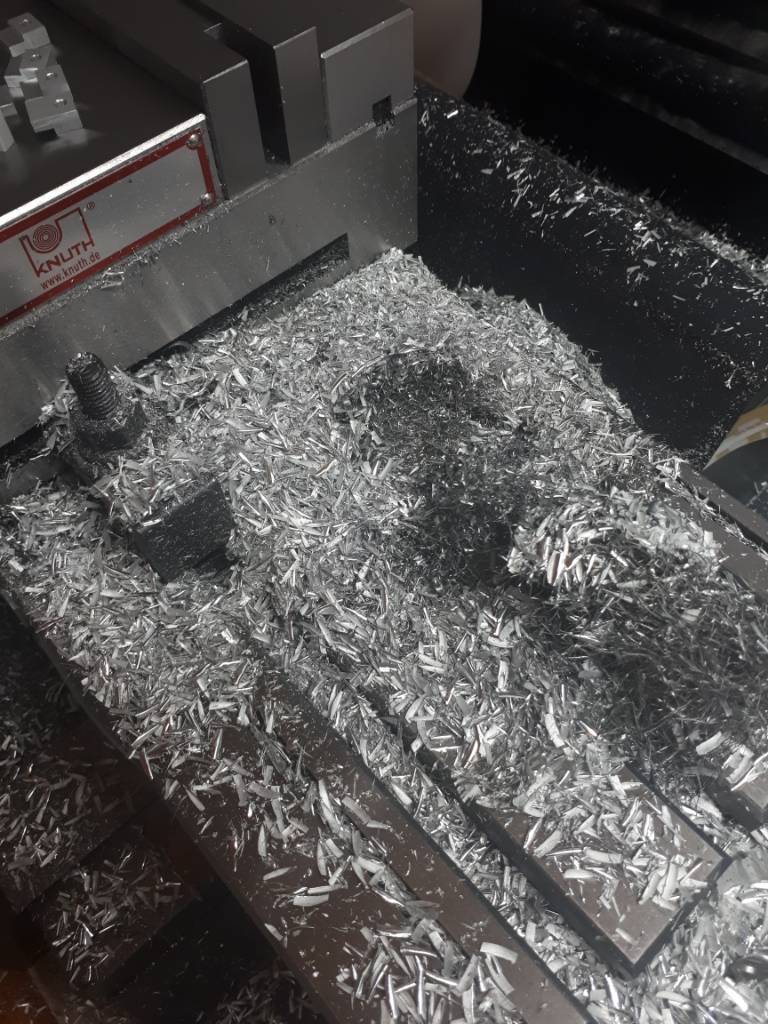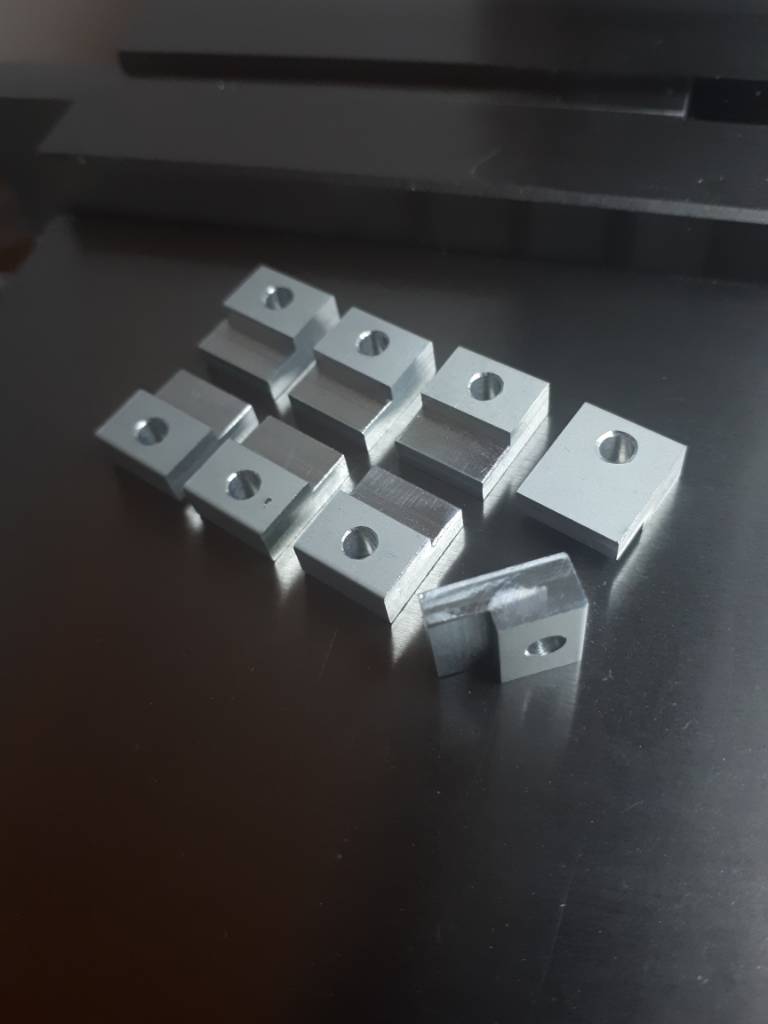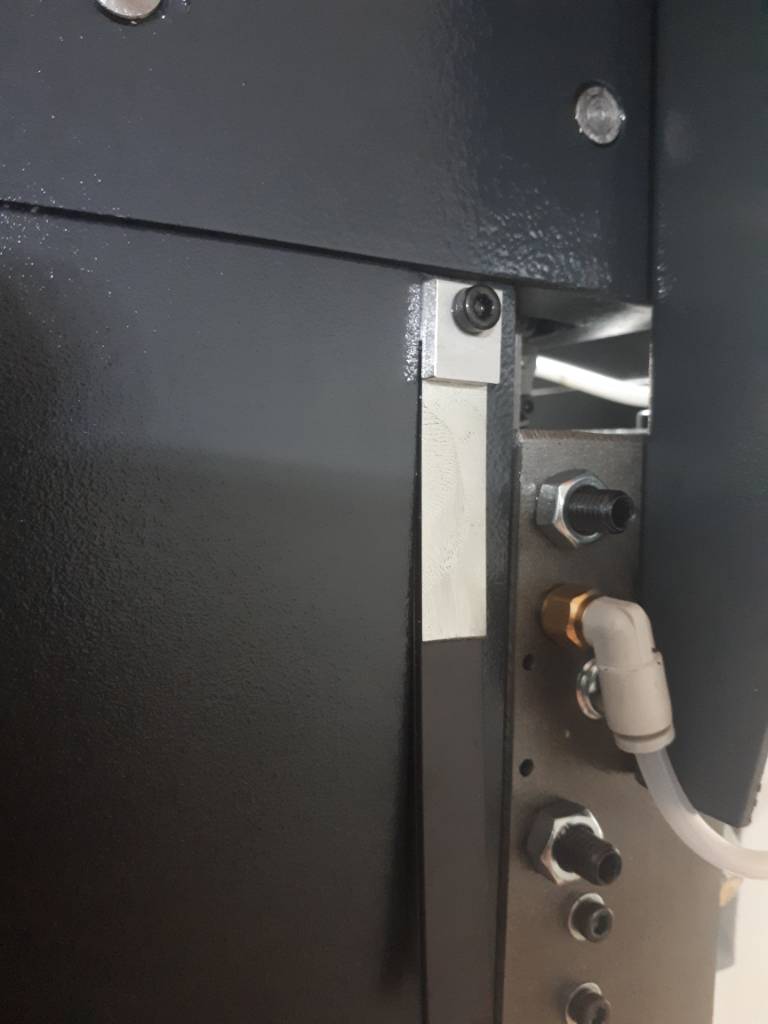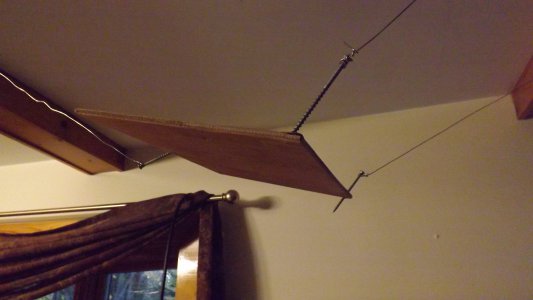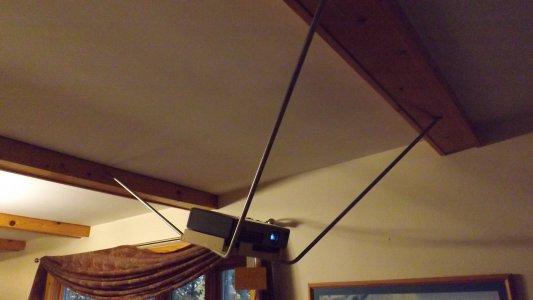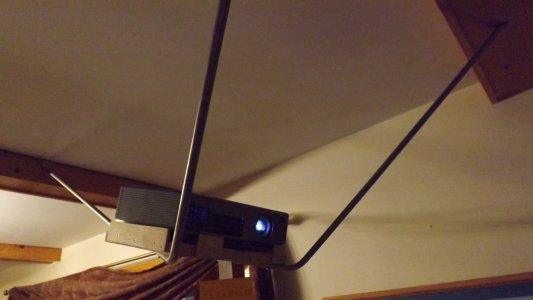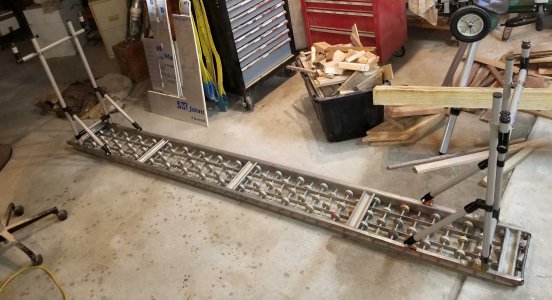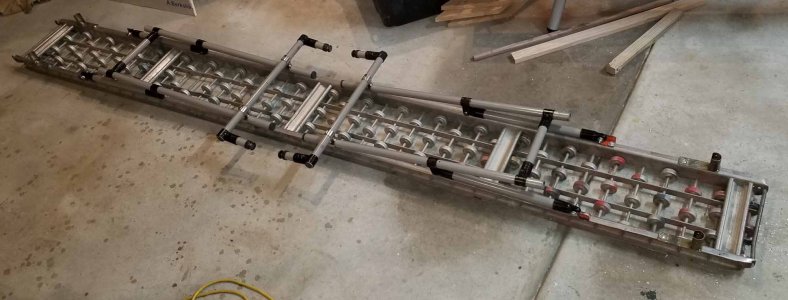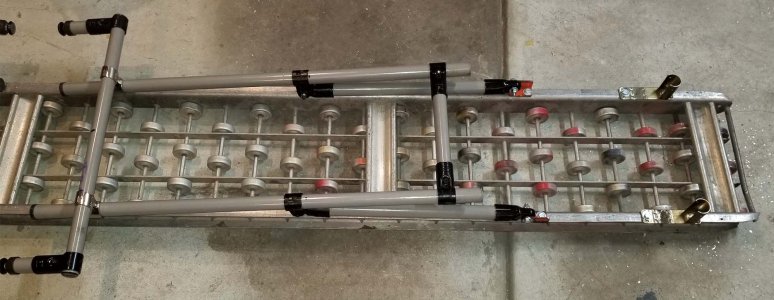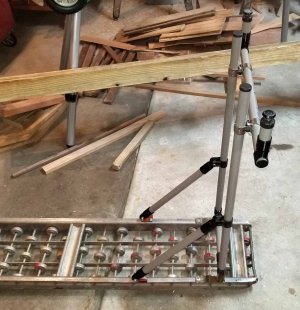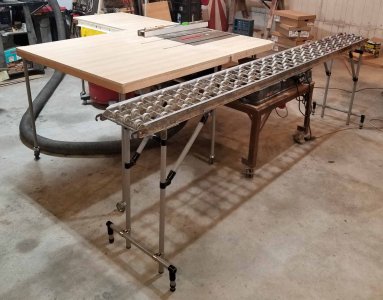POTD was a long overdue refurbishing of my Craftsman 10” table saw side/outfeed tables. The saw comes stock with a fence for ripping up to 24” on the right side of the blade. After making kitchen cabinets for multiple houses by scoring oak ply and cutting with a circular saw at 34 ½”, I upgraded the Craftsman saw with a 53” rip capacity Beisemeyer fence. My saw came with stamped sheet metal LH/RH side feed tables and no outfeed table. I made new tables from ¾” particle board with oak aprons and a laminate top. My saw is mounted to an angle iron base that also carries a 6” joiner. I did a really poor job on the far side of the RH table for support by adding a hinged stick to stabilize the saw. The fence is really hanging out in space. The Craftsman saw base is sheet metal and pretty flimsy when I’d work on the far side of the side table. The simple solution was a hinged leg. I’d swing it up out of the way to push the saw around; not a very elegant solution but the saw was mainly stationary.
Our original pole barn is 40’ x 56’ x 10’ high with a shingled roof. My shop occupies the front 32’ feet for a 32’ x 40’ shop. We re-roofed it with steel panels 6 years ago to match a 40’ x 40’ x 12’ addition on the back. Our son and I got the roof on in a day. Unfortunately, I didn’t get the ridge cap on and we had a thunderstorm that night. How much water can get into a 3” wide by 56’ opening at the peak of the roof? A lot more than I expected, the table saw was setting in the center of the shop and got at least a gallon of water dumped on it. I wiped it off the next day and put paste wax on the table. Few weeks later I tried ripping a board and had a “clunk” as the board hit the lead edge of the outfeed table. The particle board tops got wet and swelled up at least 1/8”. So, pull the laminate and belt sanded the high spots to get a workable saw again.
The "before" of my 10" Craftsman table saw. Love the 53" rip capacity of the Beisemeyer fence, but my hinged support stick was "cheesy" to say the least. Plus, poor planning on my part resulted in the saw taking a shower which swelled up the particle board support tables. Pulled the laminate and sanded it down, but had much more friction than the waxed plastic surface.
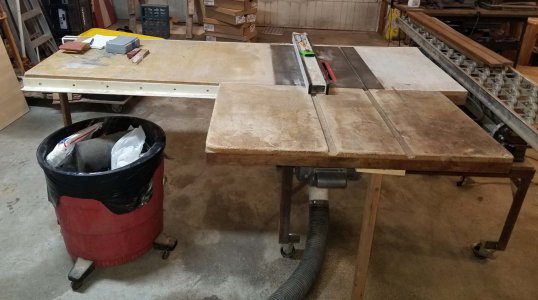
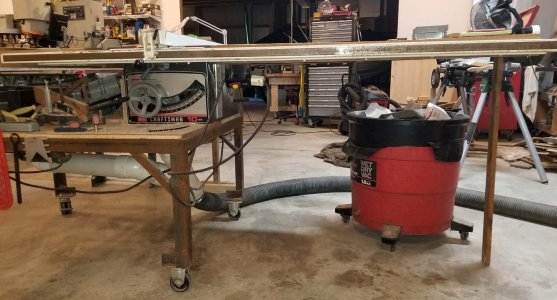
We have a local metal scrap yard who had a pretty good supply of Creform tubing and fittings for pretty cheap ($0.25 per coupling, $0.25 per foot for the tubing). Google “Creform” if you’re interested in learning more. Pretty nice stuff for throwing together pretty strong racks and tables very quickly. The tubing is about 1 1/8” diameter with a 1/16” wall.
Pulled the old tables and started with a pre-laminate piece of ¾” particle board. Made aprons from stock on hand; oak and walnut. Nothing Earth-shattering about the construction, cut to size on the saw and screw in place. I broke all of the exposed edges with a radius plane called “Slickplane”. It has an angled shoe made from brass bent at a 90. Has two carbide tipped blades with about an 1/8” radius on the end. You adjust the depth of cut so the work is started by the lead bit and taken to full depth by the second.
Made up aprons from oak and walnut on hand. Miter clamps to hold square, hand screw to clamp the apron to the table top and drill/screw together.
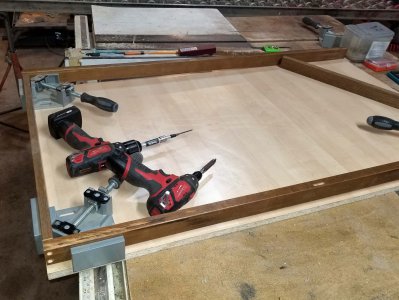
Made s support brace for under the RH table for attaching bracing back to the angle iron brace. Salvaged the angle from an old 12-ton HF shop press.
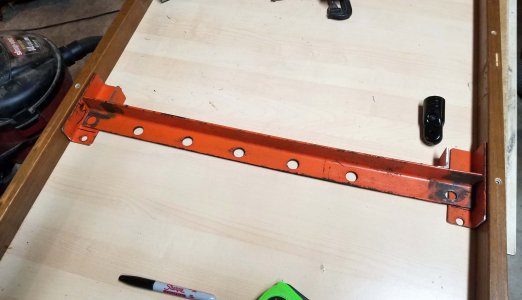
Old table out of the way.
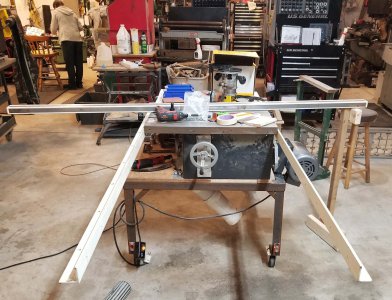
New table set in place. Put a piece of masking tape under the wood stand-offs to shim the side table slightly below the cast iron table.
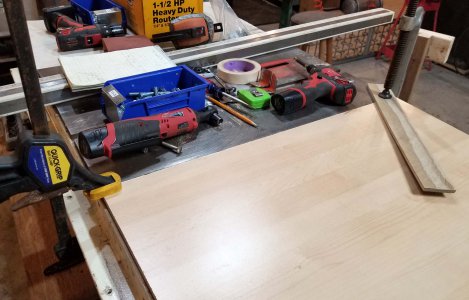
Clamped a couple of straightedges to the table tops bridging the cast iron and new side-feed table. Then drilled and screwed the table aprons to the angle iron seen above.
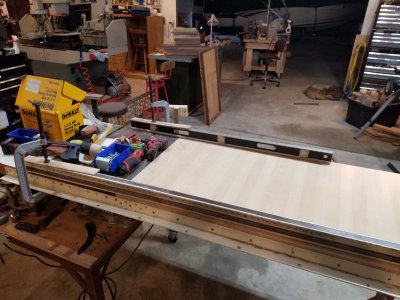
My initial thought was to support the large side feed table with no vertical legs, just a pair of angled Creform tubes running down to the angle iron legs. Welded up a support bracket for under the extension table from angle and bolted it together. It’d was “okay”, but wasn’t as stable as I’d like. The weak point is the sheet metal Craftsman table saw base. So, added two legs which make it rock solid. They are hinged and clip to the angled supports when moving the saw.
Original set up with no vertical support legs. It worked "pretty well", but leaning on the end of the table flexed the sheet metal saw base. So . . .
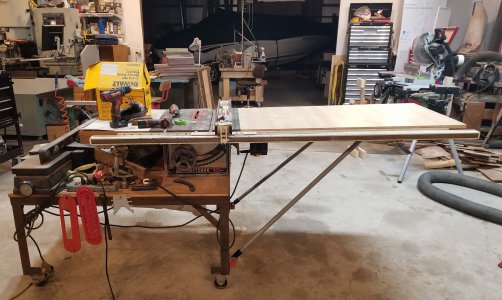
Cut some more Creform tubing and attached to hinged vertical legs. These fold in toward the angled bracing and clip in place, makes for pretty easy moving of the saw.
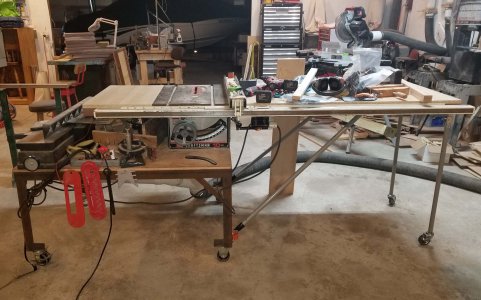
My original outfeed table was made with really no forethought on size. It extended about 35” from the back side of the table saw blade. “That should be good enough to balance an 8’ sheet of plywood’. It wasn’t . . . so the new outfeed table extends to 50” past the back of the blade. Now I can rip a sheet of plywood and not have to push down on the back side to keep it from lifting off the table.
Started by ripping the apron board so it was just below the cast iron table top with a piece of the 3/4" particle board/laminate. Drilled holes for 3 attachment points to the saw.
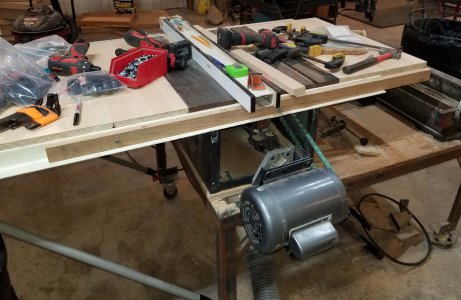
Made heavy use of a Slickplane to break the edges of all the hardwood aprons. Nicer to bump/rub your hand or arm on a 1/8" rad instead of a sharp edge.
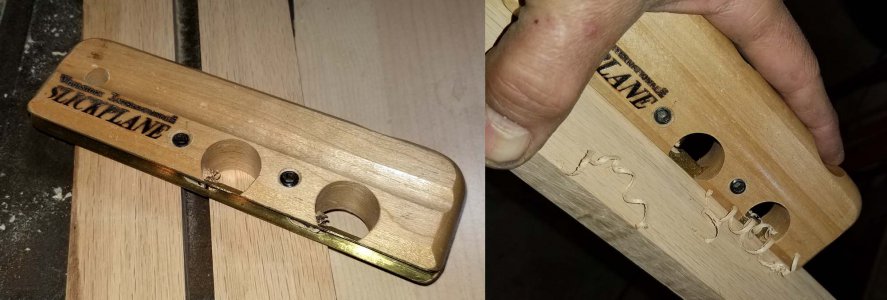
Bottom side view of the out feed table
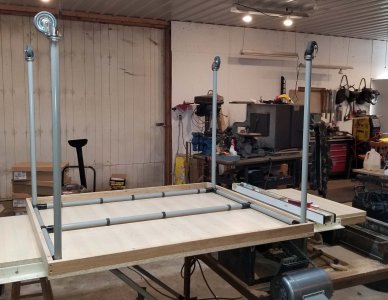
Routed a couple of clearance slots for the miter gauge.
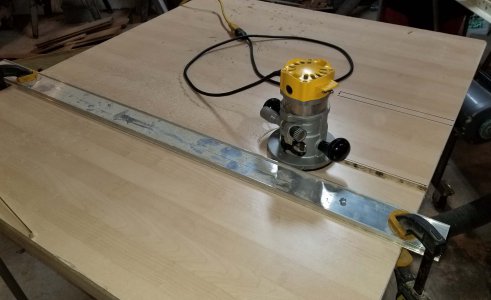
The new out feed table makes the footprint of the saw about 7’ x 9’, so a pretty big area. I used more Creform with casters for the outfeed table; three bolts attach it to the rest of the saw. It’s pretty quick to use a Milwaukee ¼” M12 ratchet to pull the bolts and roll the table out of the way separate from the saw. Also makes for a nice, quick work bench.
Finished saw table refurb. Really nice to get the table tops back to laminate covered. It's like sliding boards over an air hockey table.
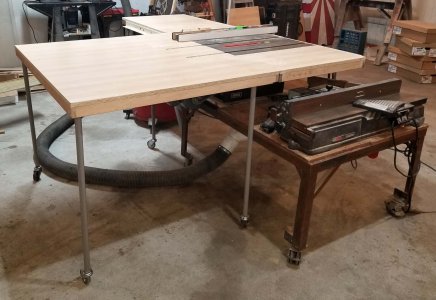
All in all, pretty happy with the results. Thanks for looking.
Bruce
